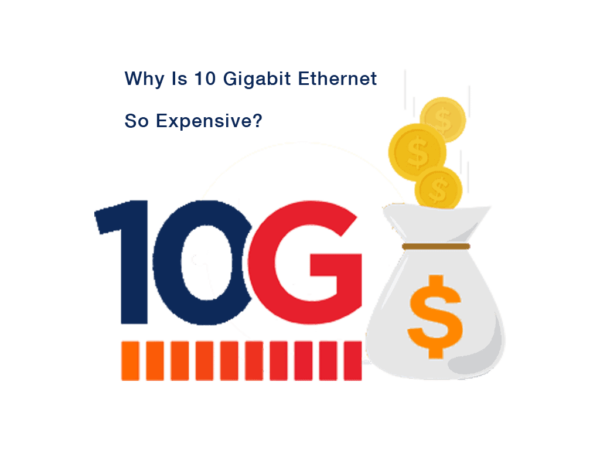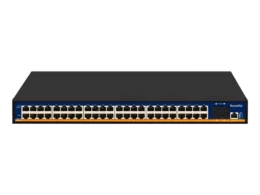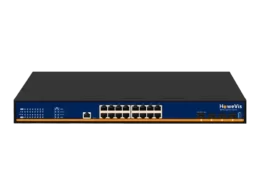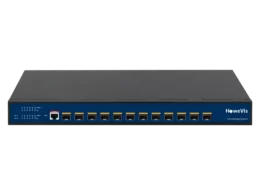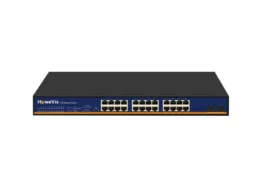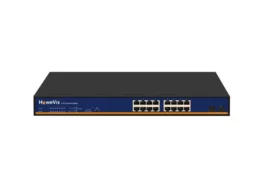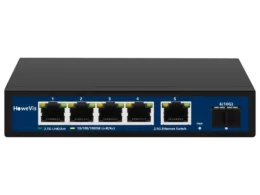The astonishing thing about the 10Gigabit Ethernet is its breathtaking speeds. At 10 billion bits per second, you can efficiently handle any high-powered network equipment. Most businesses that move extensive data over servers are embracing 10GbE for the sake of efficiency.
10GbE comes at a very high cost. Besides, it also needs a high-end computer and quality cabling as a supportive ecosystem to the internet. Otherwise, you might face bottlenecks alongside unreliable internet speeds.
The good news is; that some companies offer affordable 10GbE gear for small businesses – some even coming at less than $1000 per month.
Still, you can count on the latest Gigabit Ethernet switches to cut down on the cost, especially if you have multiple PoE devices.
High-end switches have an auto-sensing functionality – they can detect when PoE devices are present on a port and give them power.
What Is 10 Gigabit Ethernet?
10 gigabit Ethernet is a computer networking technology that offers ten times the traditional Gigabit Ethernet’s speed. Such speeds make it ideal for business computing, more so in virtualized environments.
10 Gigabit Ethernet delivers ultra-high performance alongside modern networked storage systems. As a result, it offers a very high input-output per second using high-performance disk drives.
10 Gigabit Ethernet, also called 10GbE, 10GE, or 10 GigE, shares many similarities with the traditional ethernet except a full-duplex protocol. That means this telecommunication technology doesn’t require Carrier Sense Multiple Access/Collision Detection (CSMA/CD) protocols.
Being fully interoperable with existing Ethernet protocols is very important for network managers. Moreover, it is easy to deploy the 10Gb Ethernet within an existing network when the demand for higher speed arises. So, this technology can become a cost-effective solution that supports low latency, high-speed requirements.
The 10 Gigabit Ethernet standard has multiple physical layer (PHY) standards. However, each interface has a standard socket for plugging in the physical layer modules. Nonetheless, it adheres to key attributes such as the Ethernet frame format, Media Access Control (MAC) protocol, and minimum and maximum frame size.
10GbE can use copper or fiber cabling. Over copper cable, the maximum distance is 100 meters, but you’ll need higher-grade cables since it has a high bandwidth requirement.
Where Is 10 Gigabit Ethernet Usually Used in Current Scenarios?
10GbE is excellent for an organization that needs to take its computing needs to a higher performance level. It applies to small and large businesses as they need to move large data sets or deal with virtual machines.
The high internet speed is becoming an increasingly important aspect of businesses. Intensive applications running on servers and cloud services require higher data amounts. The 10GigE eliminates all bottlenecks that might arise while using 1Gbit/s.
10GigE switches are vital for most enterprises. Typically, enterprises utilize the 10Gigabit Ethernet switches to supply Layer 2 networking for their very high-speed network application, more so in a server room or data center.
One of the most crucial requirements for 10Gigabit Ethernet switches is the fiber optic user connection. But such connection requires highly functional ports like SFP ports, which offer the utmost connector flexibility and ultimate fiber cable.
A 10 Gigabit Ethernet switch can better serve the high-speed network, an aggregation point, or an access switch.
Remember, if you have a network of 10 computers communicating with a server cluster, they share the bandwidth equally. So, if you are operating at 1Gbit/s, each device comes down to 100Mbit/s. An increase in the number of computers reduces the internet speed, and thus, the Gigabit Ethernet becomes slow.
How Much Does 10 Gigabit Ethernet Cost?
The cost of 10Gigabit ethernet varies significantly from one provider to the next in your region. Most internet suppliers charge for internet connection services and the fiber connection to your home or office.
Here, the total cost might vary with the size of the building. Getting a quote from a company can be tricky – because most telecoms quote rube prices, and that’s after passing a pre-qualification test. Good thing; most telecommunications offer discounts on their costs. Additionally, there is an annual drop in prices of bandwidth above 10Mbps by about 20%.
Some companies host interconnect points, which are available for rent. Renting such facilities gives you the flexibility of installing high-speed routers to major providers at high speed using a local ethernet port. However, you’ll need to connect to your other sites. Cabling can also affect the cost.
Generally, access to 10Gbps Internet might range between $2,000-$9,000 per month in the US. However, some companies can offer the same for much less based on regional factors.
What Makes 10 Gigabit Ethernet So Expensive?
Many components come together to create a well-functioning computer network system. Apart from the cost of an internet connection, having a working 10gigabit requires devices with particular specifications.
At the moment, a 10GB ethernet card can cost $100 upwards, which is quite reasonable. But you’ll need to have a powerful computer to take advantage of such faster speeds. Again, you’ll need to upgrade to 10 Gb switches, which might be costly (about $500).
However, some brands sell gigabit switches with 10Gb ports for as little as $250.
Technical issues within the 10-gigabit ecosystem affect the cost. The choice of cabling also affects the price. Using the fiber-based 10-GbE systems is currently expected, but their cost is much higher than copper-based cables. To get the most out of 10 GbE, use higher-specification cables with very long runs.
In reality, most ethernet devices are available for professional use and businesses. Thus, they have allotted an appropriate premium tag. Apart from the fantastic speeds, any electronic device with top-notch features is always pricy.
Scaling up your existing system to 10gbs is incredibly expensive. An average SSD can manage 500MB/s in AHCI mode, meaning it can write or scan data at that connectivity speed, let alone the CPU needs.
On average, you need a machine with at least a high-end CPU, decent RAM, and NVMe SSD to get the entire ecosystem to work reliably.
What Do You Need for 10 Gigabit Ethernet?
A 10 Gigabit Ethernet’s standout feature is its speed, making it an ideal internet solution for users needing speed.
Still, users who move a large amount of data over their network will find a speed of 10 billion bits per second, very suitable for their daily tasks.
However, it is noteworthy that your hardware/machine speed drastically affects the network speed. Therefore, using an old computer with 10mbps won’t give you the power you require to transfer data.
Business environments have an aggregate bandwidth justifying the need for 10 Gbps Ethernet – it supports multiple users at ago, without straining the system. But you need a PoE switch. The PoE switch has a built-in Power over Ethernet feature, i.e., it can run other devices via the Ethernet cabling. And if you have distributed switches, get PoE pass-through switches.
Such power alleviates bottlenecks, resulting in a speed boost. Besides, make sure you constantly monitor your network to notice crunch points. It helps identify the right places to install 10 Gigabit Ethernet.
Servers can use the full 10 Gigabit Ethernet, as it is the focal point on a network. That eliminates the need to combine multiple Gigabit Ethernet ports.
Final Thoughts!
It’s true; 10 Gigabit Ethernet is still expensive, but it offers the best internet speeds, making it easy to move massive amounts of data with ease. While the price may be disappointing, you may perform minor tweaks to reduce installation costs.
For instance, you can decrease the cost of 10 gigabit Ethernet by choosing the right gigabit Ethernet switch made by a reliable manufacturer. That means you can power many devices using the available power cables.
